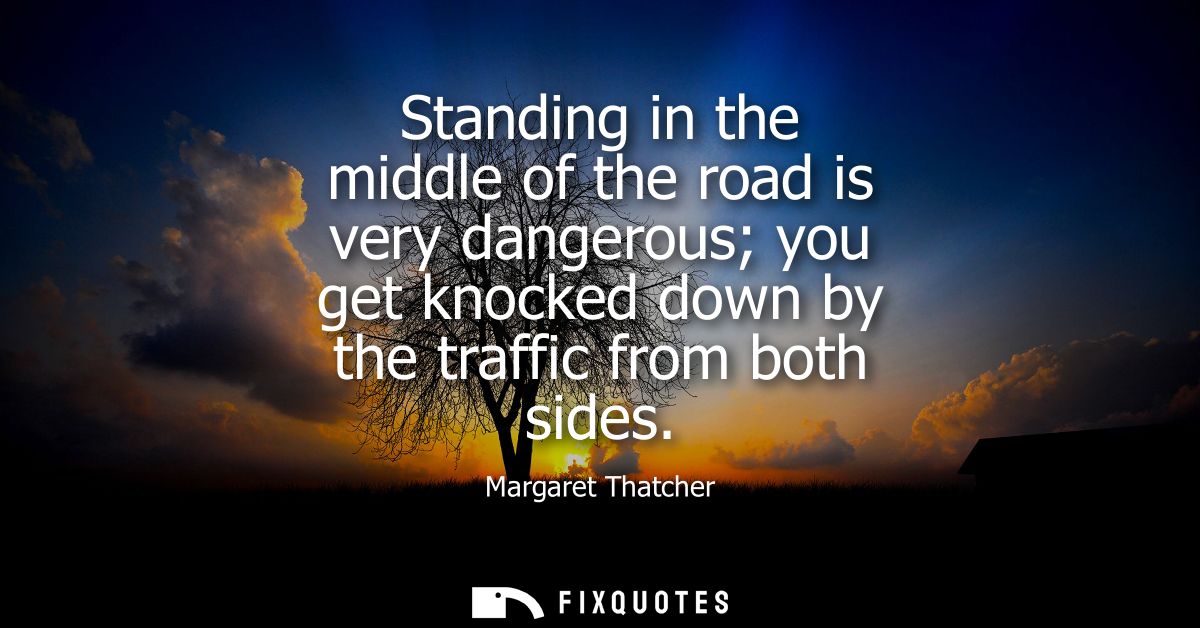"Standing in the middle of the road is very dangerous; you get knocked down by the traffic from both sides"
- Margaret Thatcher
About this Quote
This quote by Margaret Thatcher is a metaphor for the risks of indecision. By standing in the middle of the roadway, one is unable to move on or backward, and is instead stuck in the very same location. This inaction can be hazardous, as one is susceptible to the repercussions of both sides. In this case, the traffic from both sides represents the repercussions of both decisions, and the threat of being stuck in the middle is that a person will be struck by both of them. This quote is a cautioning to not be indecisive, as it can result in unfavorable effects from both sides. It is essential to decide and progress, instead of staying in the very same place and being vulnerable to the consequences of both sides.
About the Author

